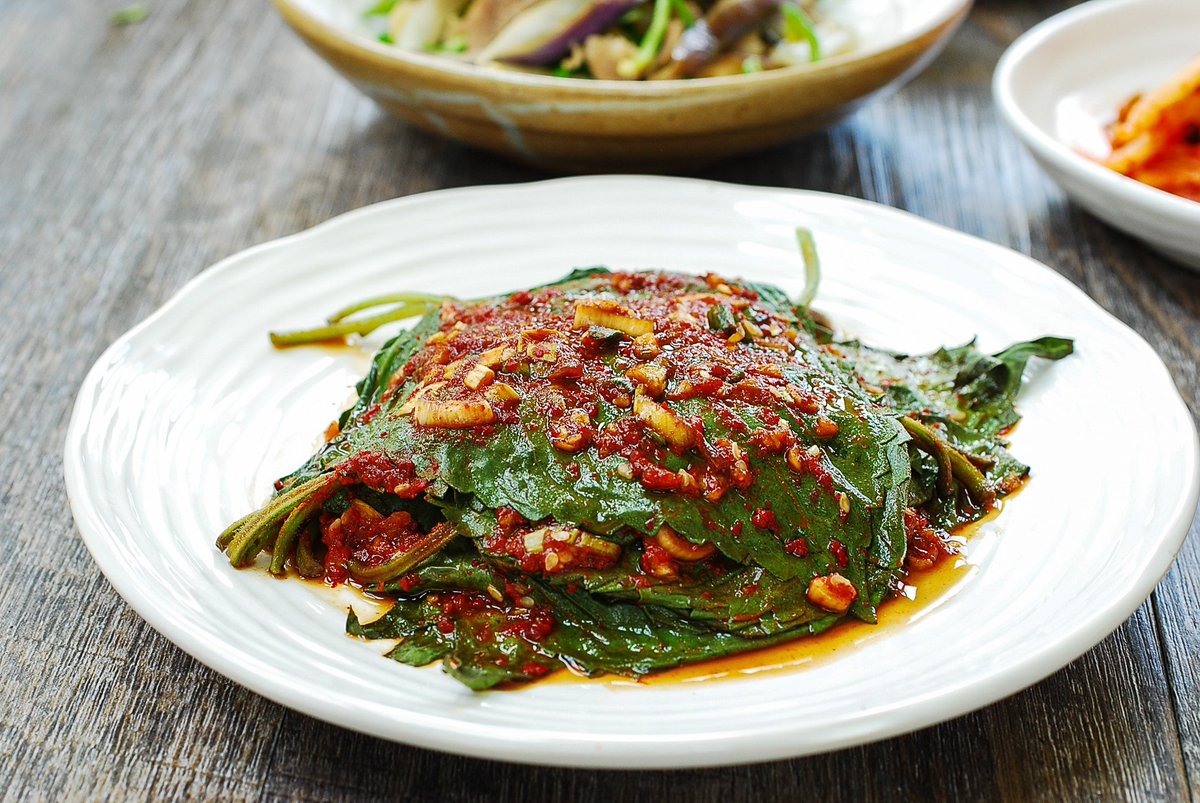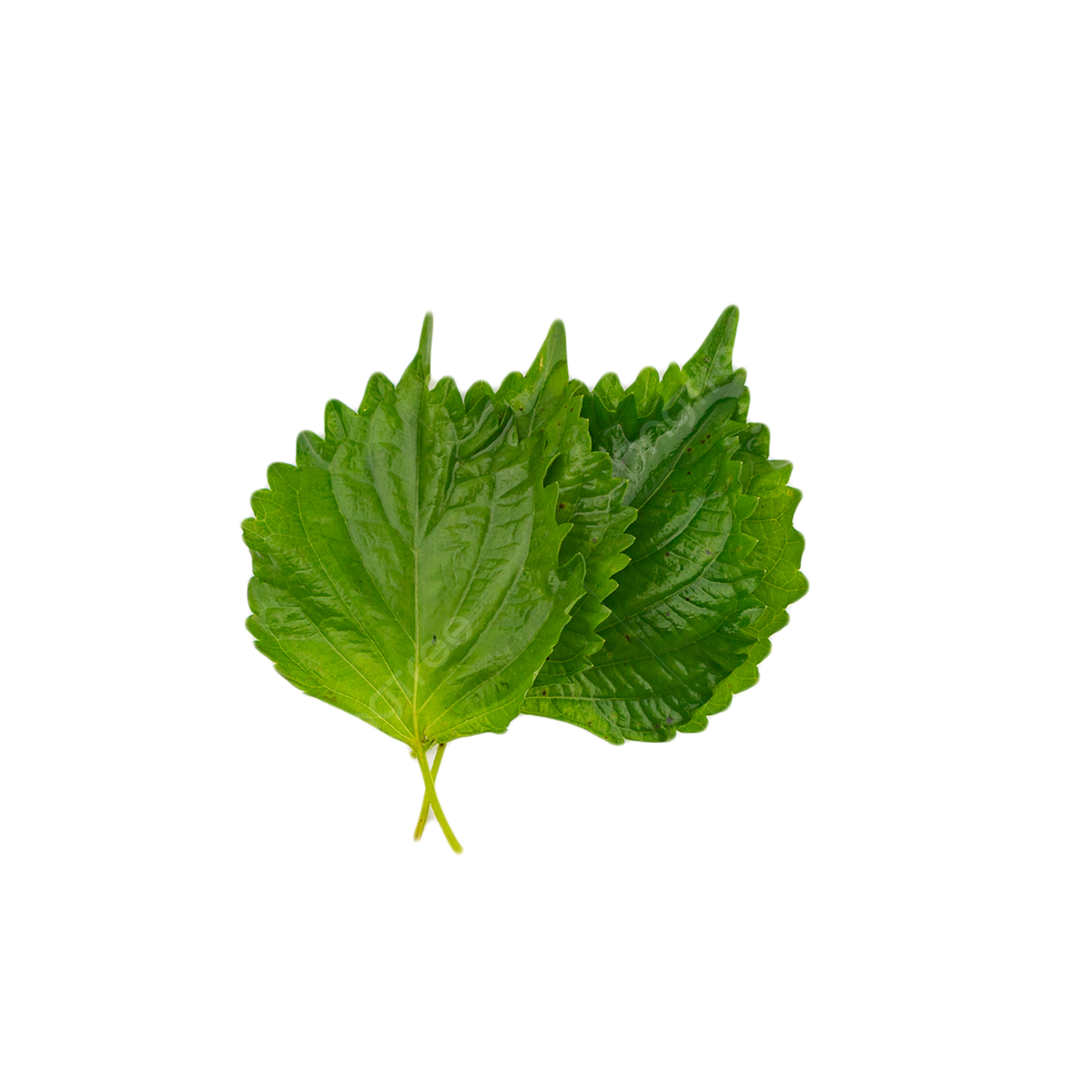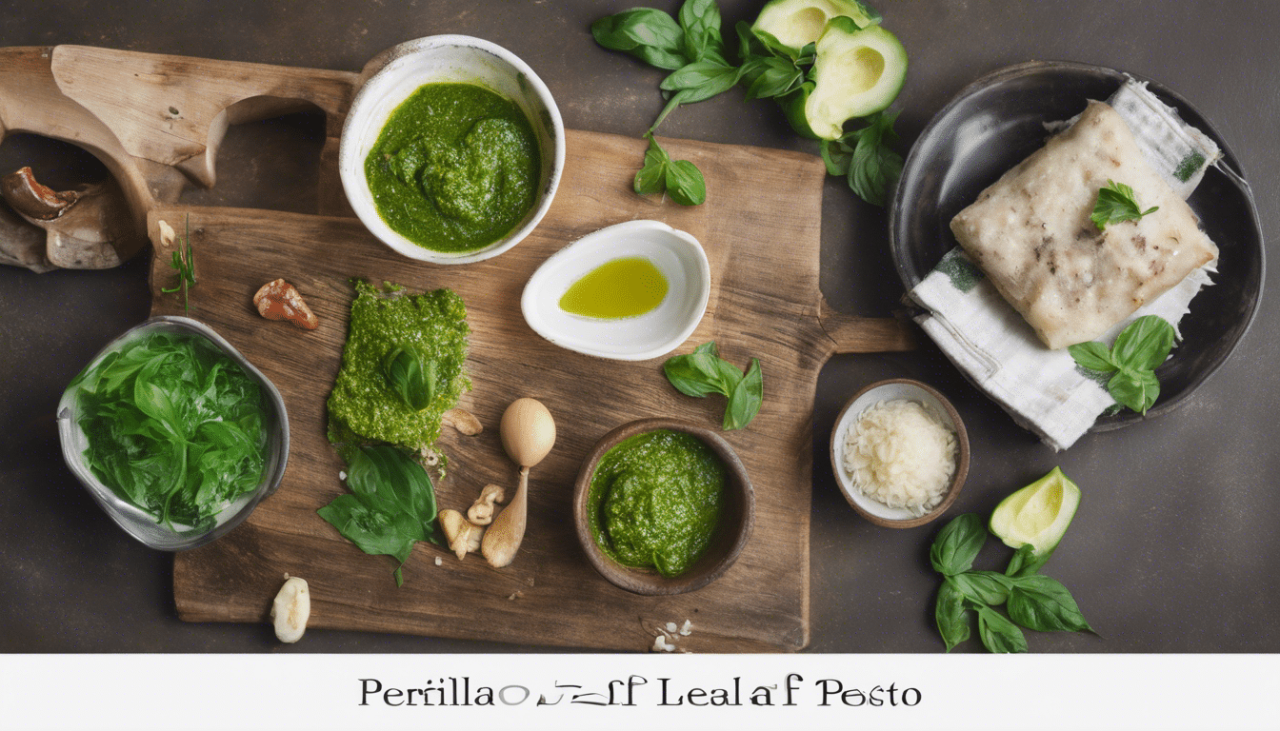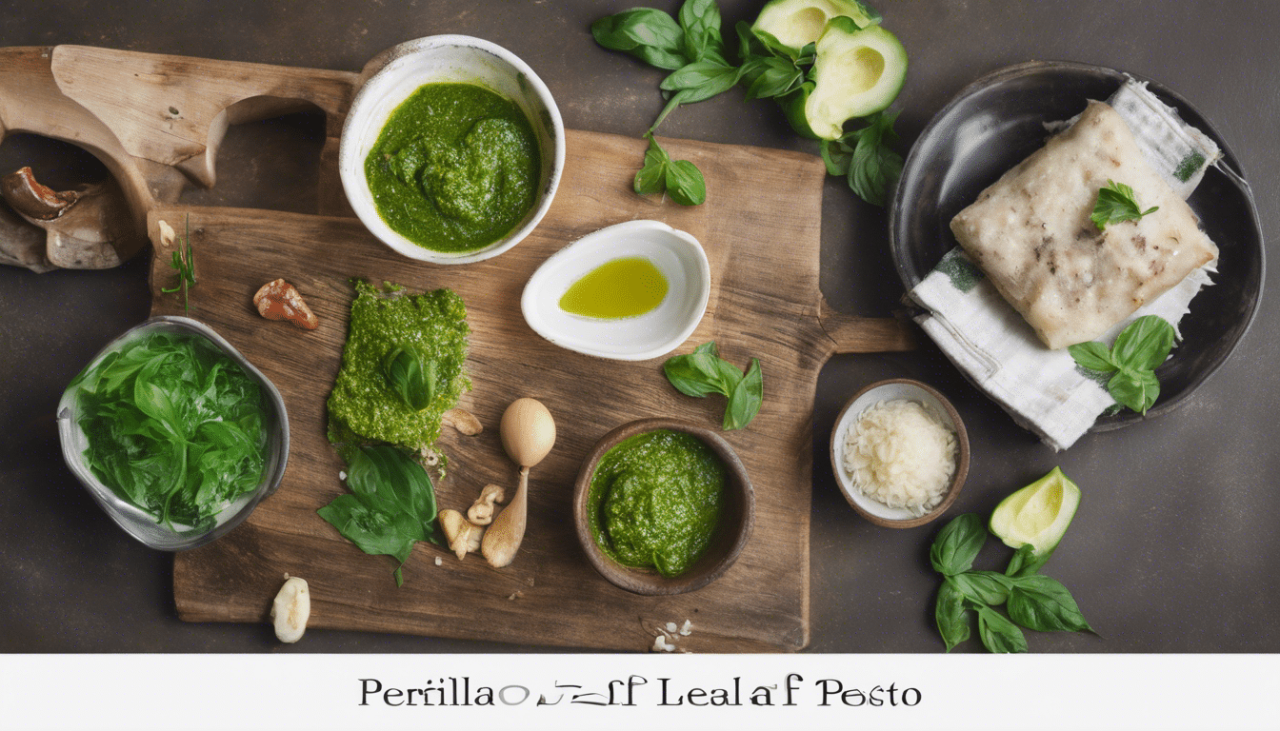Perilla Leaf in Your Kitchen: Tips for Creating Unique and Flavorful Recipes – a title that promises an exciting culinary adventure. Perilla, a vibrant green herb with a unique flavor profile, is poised to revolutionize your cooking. This versatile ingredient, often described as a blend of nutty, minty, and citrusy notes, brings a fresh and exciting dimension to dishes, whether you’re a seasoned chef or a home cook venturing into new culinary territories.
Perilla’s rich nutritional value, brimming with antioxidants and omega-3 fatty acids, adds another layer of appeal, making it a delicious and healthy choice for your kitchen.
Beyond its captivating flavor and nutritional benefits, perilla’s versatility shines in its diverse culinary applications. It can be enjoyed fresh, dried, or pickled, adding a burst of flavor to a wide array of dishes. From traditional Korean, Japanese, and Chinese cuisines where it is a staple ingredient, to modern culinary creations, perilla finds its place in salads, sauces, marinades, and as a vibrant garnish.
Introduction to Perilla Leaf

Perilla leaf, also known as shiso, is a versatile culinary ingredient that adds a unique and vibrant flavor to dishes. Native to East Asia, this aromatic herb has gained popularity worldwide for its distinct taste and potential health benefits. Perilla leaf boasts a complex flavor profile that blends nutty, minty, and citrusy notes.
This combination makes it a perfect complement to various cuisines, from Japanese and Korean to Thai and Vietnamese. Its unique aroma and taste make it a popular ingredient in salads, soups, stir-fries, and even desserts.
Nutritional Benefits of Perilla Leaf
Perilla leaf is not only delicious but also packed with nutrients. It is a rich source of antioxidants, which help protect the body against damage caused by free radicals. Additionally, perilla leaf is a good source of omega-3 fatty acids, known for their heart-healthy properties.
Perilla leaf contains a variety of vitamins and minerals, including vitamin A, vitamin C, and iron. It is also a good source of dietary fiber, which promotes digestive health.
Flavor Profiles of Perilla Leaf
Perilla leaf’s distinct flavor profile is a key reason for its culinary versatility. Its taste can vary depending on the variety and growing conditions, but generally, it combines:
- Nutty:A subtle nutty flavor reminiscent of sesame or walnut.
- Minty:A refreshing minty note that adds a cool and invigorating element.
- Citrusy:A hint of citrus, often described as lemon or lime, adds a bright and tangy element.
These flavor profiles make perilla leaf a versatile ingredient that can be used to enhance both savory and sweet dishes.
Culinary Applications of Perilla Leaf
Perilla leaf’s versatility extends to its culinary applications. It can be used in various ways, including:
- Fresh:Add fresh perilla leaves to salads, sandwiches, and sushi for a burst of flavor and aroma.
- Cooked:Incorporate perilla leaves into stir-fries, soups, and stews for a unique and aromatic touch.
- Pickled:Pickled perilla leaves, known as “shiso-zuke,” are a popular condiment in Japanese cuisine. They add a tangy and spicy element to dishes.
- Dried:Dried perilla leaves can be used to make tea or as a flavoring agent in sauces and marinades.
- Infused:Perilla leaf can be infused into oils and vinegars to create unique flavor profiles.
Perilla leaf is a versatile ingredient that can be used in a variety of ways to enhance the flavor of dishes.
Culinary Applications of Perilla Leaf
Perilla leaf, with its distinct aroma and flavor profile, is a versatile ingredient that can be used in various culinary applications. From traditional dishes to modern cuisine, perilla leaf adds a unique touch to a wide range of recipes.
Fresh Perilla Leaf
Fresh perilla leaves are most commonly used in Asian cuisine. Their vibrant green color and fresh, slightly minty flavor add a delightful contrast to savory dishes.
- Korean Cuisine:In Korea, perilla leaf is often used as a wrapping for grilled meats, particularly bulgogi and samgyeopsal. The leaves help to absorb excess fat and provide a refreshing contrast to the rich flavors of the meat. Perilla leaf is also used as a garnish for various dishes, including bibimbap and japchae.
- Japanese Cuisine:In Japan, perilla leaf is known as shiso and is used in a variety of dishes. It is a common ingredient in sushi, where it is used as a garnish or wrapped around fish and rice. Shiso is also used in tempura, miso soup, and various salads.
- Chinese Cuisine:In China, perilla leaf is called zi su and is used in stir-fries, soups, and other dishes. It is often paired with seafood, pork, and chicken. Zi su is also used as a flavoring agent in sauces and marinades.
Dried Perilla Leaf, Perilla Leaf in Your Kitchen: Tips for Creating Unique and Flavorful Recipes
Dried perilla leaf, also known as perilla seed, is used as a spice and flavoring agent. Its flavor is more concentrated and earthy compared to fresh perilla leaf.
- Korean Cuisine:Dried perilla leaf is a key ingredient in gochujang, a fermented chili paste that is used in a variety of Korean dishes. It also adds a unique flavor to kimchi, a fermented cabbage dish that is a staple in Korean cuisine.
- Japanese Cuisine:Dried perilla leaf is used in Japanese cuisine as a spice for seasoning dishes like miso soup and rice. It is also used in making pickles and condiments.
- Chinese Cuisine:Dried perilla leaf is used in Chinese cuisine as a spice for seasoning dishes like stir-fries and soups. It is also used in making sauces and marinades.
Pickled Perilla Leaf
Pickled perilla leaf is a popular condiment in many Asian cuisines. The pickling process enhances the flavor of the leaves, creating a tangy and savory condiment.
- Korean Cuisine:Pickled perilla leaf, known as “kkaennip jangajji,” is a popular side dish in Korea. It is often served with grilled meats, fried foods, and rice.
- Japanese Cuisine:Pickled perilla leaf, known as “shisozuke,” is used in Japanese cuisine as a condiment for sushi, sashimi, and other dishes. It is also used as a flavoring agent in sauces and marinades.
- Chinese Cuisine:Pickled perilla leaf is used in Chinese cuisine as a condiment for stir-fries, noodles, and other dishes. It is also used as a flavoring agent in sauces and marinades.
Modern Cuisine
Perilla leaf is becoming increasingly popular in modern cuisine, where its unique flavor and versatility are appreciated.
- Salads:Perilla leaf can be used to add a refreshing and aromatic touch to salads. It pairs well with ingredients like cucumbers, tomatoes, and avocado.
- Sauces:Perilla leaf can be used to make flavorful sauces, such as chimichurri sauce, pesto, and salsa verde. Its unique flavor adds depth and complexity to these sauces.
- Marinades:Perilla leaf can be used to create flavorful marinades for grilled meats, poultry, and seafood. Its distinct aroma and flavor add a unique touch to the finished dish.
- Garnishes:Perilla leaf can be used as a garnish for various dishes, adding a touch of color and flavor. It can be used to garnish soups, salads, sandwiches, and desserts.
Recipes Featuring Perilla Leaf: Perilla Leaf In Your Kitchen: Tips For Creating Unique And Flavorful Recipes
Perilla leaf, with its unique aroma and flavor, adds a distinct touch to a wide range of culinary creations. From refreshing salads to aromatic soups and flavorful stir-fries, this versatile ingredient can be incorporated into various dishes.
Salads
Perilla leaf’s fresh, slightly minty flavor makes it a perfect addition to salads. It can be used as a garnish or incorporated into the salad itself, adding a burst of flavor and color.
-
Perilla Leaf and Cucumber Salad
This simple yet refreshing salad combines the coolness of cucumber with the unique flavor of perilla leaf. The salad is dressed with a light vinaigrette, enhancing the flavors of both ingredients.
A vibrant green salad with thin slices of cucumber and perilla leaves, tossed in a tangy vinaigrette.
-
Korean Perilla Leaf Salad (Ssam)
This traditional Korean salad features perilla leaves wrapped around grilled meats, rice, or other fillings. The leaves add a refreshing and slightly spicy element to the dish.
A colorful platter of perilla leaves, alongside grilled meats, rice, and various sauces, ready to be wrapped into individual bites.
Soups
Perilla leaf can be added to soups to enhance their flavor and aroma. Its unique taste complements a variety of broth bases, from light and refreshing to rich and savory.
-
Perilla Leaf and Tofu Soup
This light and flavorful soup features soft tofu and perilla leaves in a clear broth. The perilla leaves add a unique flavor and aroma to the soup, while the tofu provides a satisfying texture.
A bowl of clear soup with soft tofu cubes and perilla leaves, garnished with a sprinkle of sesame seeds. The soup has a light and refreshing flavor.
-
Spicy Perilla Leaf Noodle Soup
This hearty soup features noodles, vegetables, and perilla leaves in a spicy broth. The perilla leaves add a refreshing touch to the spicy broth, balancing the flavors and adding a unique aroma.
A steaming bowl of noodle soup with a fiery red broth, filled with noodles, vegetables, and perilla leaves. The soup has a bold and spicy flavor, with a hint of refreshing perilla.
Stir-Fries
Perilla leaf is a popular ingredient in stir-fries, adding a unique flavor and aroma to the dish. It can be added at the end of cooking to preserve its freshness or cooked briefly to soften its texture.
-
Chicken and Perilla Leaf Stir-Fry
This stir-fry features tender chicken pieces, vegetables, and perilla leaves, cooked in a savory sauce. The perilla leaves add a refreshing touch to the dish, balancing the savory flavors.
A colorful stir-fry with chicken pieces, vegetables, and perilla leaves, coated in a glossy sauce. The dish has a savory flavor, with a refreshing touch from the perilla leaves.
Perilla leaf, with its vibrant purple hue and distinct aroma, adds a unique twist to Asian cuisine. Its flavor profile, reminiscent of mint and basil, lends itself beautifully to stir-fries, salads, and even desserts. If you’re looking to expand your culinary horizons with exotic flavors, you might also want to explore the versatility of kaffir lime leaves, another aromatic ingredient often used in Southeast Asian cooking.
How to Find and Use Kaffir Lime Leaf: Essential Tips for Cooking and Health provides a comprehensive guide to incorporating this ingredient into your dishes. Just like kaffir lime leaves, perilla leaf offers a world of flavor possibilities, waiting to be discovered.
-
Shrimp and Perilla Leaf Stir-Fry
This stir-fry features juicy shrimp, vegetables, and perilla leaves, cooked in a light sauce. The perilla leaves add a unique flavor and aroma to the dish, complementing the delicate taste of shrimp.
A fragrant stir-fry with shrimp, vegetables, and perilla leaves, cooked in a light sauce. The dish has a delicate flavor, with a hint of perilla aroma.
Desserts
While less common, perilla leaf can also be used in desserts, adding a unique flavor and aroma. It can be used as a garnish, infused into syrups, or even incorporated into cakes and ice creams.
-
Perilla Leaf Ice Cream
This unique ice cream features a subtle perilla flavor, adding a refreshing twist to the classic dessert. The ice cream can be garnished with fresh perilla leaves for an extra touch of flavor.
A scoop of light green ice cream with a delicate perilla flavor, garnished with fresh perilla leaves. The ice cream has a refreshing and slightly minty taste.
-
Perilla Leaf Cake
This cake features a subtle perilla flavor infused into the batter, adding a unique twist to the traditional dessert. The cake can be decorated with perilla leaves and a light glaze for a beautiful presentation.
A moist and flavorful cake with a delicate perilla flavor, decorated with perilla leaves and a light glaze. The cake has a unique aroma and a subtle minty taste.
Tips for Using Perilla Leaf in the Kitchen

Perilla leaf, with its unique flavor profile and versatility, can be a delightful addition to your culinary repertoire. Understanding how to use it effectively is crucial for unlocking its full potential. This section provides practical tips on storing, pairing, and adjusting the amount of perilla leaf to suit your taste and dishes.
Storing Perilla Leaf
Fresh perilla leaves are best enjoyed when they are at their peak freshness. To ensure that your perilla leaves retain their vibrant flavor and aroma, proper storage is key.
- Refrigeration:Wrap perilla leaves in a damp paper towel and store them in an airtight container in the refrigerator. This method can preserve the leaves for up to a week.
- Freezing:For longer storage, freeze perilla leaves by blanching them in boiling water for 30 seconds and then quickly chilling them in ice water. After drying thoroughly, store them in freezer-safe bags for up to 3 months.
Pairing Perilla Leaf with Other Ingredients
Perilla leaf’s distinct flavor profile lends itself well to a variety of pairings, adding complexity and depth to dishes.
- Proteins:The earthy and slightly minty notes of perilla leaf complement grilled or pan-fried meats like chicken, pork, and fish. Its aroma can also enhance the flavor of seafood dishes, especially those with a delicate taste, like salmon or tuna.
- Vegetables:Perilla leaf pairs beautifully with both raw and cooked vegetables. Its refreshing taste can elevate salads, while its subtle bitterness can add depth to stir-fries and roasted vegetables.
- Spices:Perilla leaf’s flavor profile allows it to be used in combination with a range of spices. For example, it can be used in conjunction with ginger, garlic, and chili peppers to create complex and aromatic sauces and marinades.
Adjusting the Amount of Perilla Leaf
The amount of perilla leaf used in a dish can vary based on personal preference and the desired flavor intensity.
- Subtle Flavor:For a subtle flavor, use a small amount of perilla leaf, perhaps a few leaves per serving.
- Stronger Flavor:To achieve a more pronounced flavor, increase the amount of perilla leaf used. For example, you can use a handful of leaves per serving or add it to sauces and marinades for a more intense taste.
Perilla Leaf: A Flavorful Journey
Perilla leaf, with its unique flavor profile, has become a staple in my kitchen. Its versatility allows it to be used in a variety of dishes, from simple salads to complex stir-fries. This journey into the world of perilla leaf has been an exciting exploration of flavor and creativity.
Personal Anecdotes and Stories
My first encounter with perilla leaf was in a Korean restaurant. I was intrigued by its vibrant purple hue and bold, almost minty aroma. I hesitantly tried it in a bibimbap, and was immediately captivated by its unique flavor that danced on my tongue.
Since then, I’ve been experimenting with perilla leaf in various ways, from adding it to my favorite kimchi recipe to using it as a garnish for grilled fish.
Encouraging Experimentation
Don’t be afraid to experiment with perilla leaf. Its versatility allows it to be used in a wide range of dishes. Try adding it to your favorite salads, soups, stir-fries, or even as a garnish for grilled meats. You might be surprised by the delicious and unexpected flavors that emerge.
Resources for Further Exploration
There are numerous resources available for those who wish to delve deeper into the world of perilla leaf. Here are a few starting points:* Cookbooks:Several cookbooks feature perilla leaf, offering a range of recipes and culinary inspiration. Search for cookbooks focusing on Korean, Japanese, or Southeast Asian cuisine, as these cultures have a long tradition of using perilla leaf in their cooking.
Websites
Many websites dedicated to food and cooking offer articles, recipes, and tips on using perilla leaf. A simple search on Google or other search engines will yield a wealth of information.
Online Communities
Perilla leaf, with its unique flavor and versatility, is a culinary gem waiting to be discovered. Whether you’re adding it to stir-fries, making a refreshing salad, or crafting a flavorful pesto, this herb can elevate your dishes. And just like perilla leaf can be propagated from cuttings, you can easily multiply your favorite ivy plant with the right techniques.
Learn how to create a lush abundance of ivy with our comprehensive guide on How to Turn One Ivy Plant into Many: The Ultimate Propagation Guide. Once you’ve mastered the art of propagation, you’ll be ready to experiment with perilla leaf and unlock a world of flavor possibilities in your kitchen.
Online communities dedicated to food and cooking can be a great source of inspiration and advice. Join forums or social media groups focused on Asian cuisine or specific culinary techniques, where you can connect with other cooks and share your experiences with perilla leaf.
Ending Remarks

Embark on a flavorful journey with perilla leaf. Experiment with its unique flavor profile, incorporating it into your favorite dishes, or exploring new culinary creations. Let your creativity flow as you discover the endless possibilities of this versatile ingredient.
With its unique taste and nutritional benefits, perilla leaf is sure to become a culinary staple in your kitchen, bringing a touch of excitement and flavor to every meal.
User Queries
What is the best way to store perilla leaf to maintain its freshness?
To preserve the freshness of perilla leaves, store them in an airtight container in the refrigerator for up to a week. You can also freeze them for longer storage.
What are some common dishes that feature perilla leaf?
Perilla leaf is a staple in many Asian cuisines. In Korean cuisine, it is often used in bibimbap and kimchi. In Japanese cuisine, it is used in sushi, tempura, and ramen. In Chinese cuisine, it is often used in stir-fries and soups.
What are some tips for pairing perilla leaf with other ingredients?
Perilla leaf pairs well with a variety of ingredients, including seafood, chicken, pork, tofu, and vegetables. It also complements a range of spices, such as ginger, garlic, chili, and sesame.
